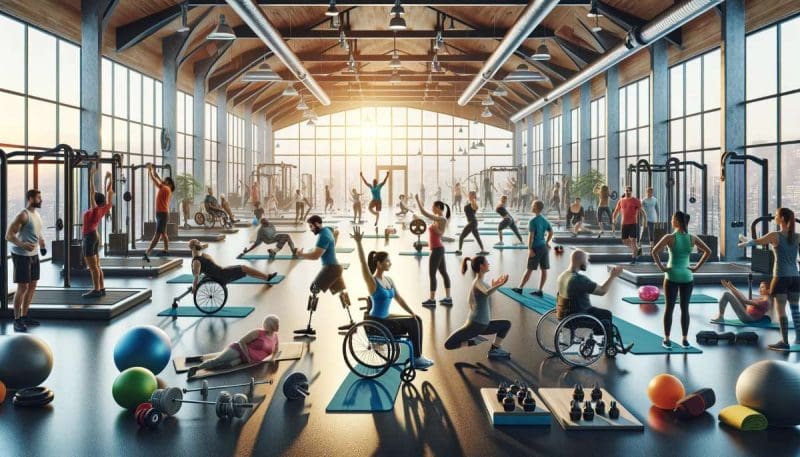
The concept of fitness is evolving, breaking barriers and embracing diversity more than ever. The catalyst for this progressive change is adaptive fitness, a movement making exercise accessible to people of all abilities. This concept is revolutionizing how we think about fitness, proving that it’s not a one-size-fits-all endeavor.
In a society where diversity and inclusivity are increasingly valued, the fitness industry is undergoing a significant transformation. Adaptive fitness is leading this change, ensuring that physical exercise is accessible to everyone, irrespective of their abilities. This innovative approach is not just redefining fitness standards but is also reshaping perceptions about the capabilities of individuals with disabilities.
What Is Adaptive Fitness?
Adaptive fitness is a personalized approach to exercise, tailored to meet the unique needs of individuals with disabilities. This concept extends beyond conventional training methods, encompassing a wide range of physical, cognitive, and developmental abilities. It’s about creating an environment where everyone, from wheelchair users to those with sensory impairments, can engage in physical activity in a way that’s both effective and enjoyable.
Organizations like Special Strong are leading examples in this field, offering specialized programs and creating spaces where diversity in fitness is not just accepted but celebrated.
Why Adaptive Fitness Matters
The importance of adaptive fitness cannot be overstated. For individuals with disabilities, traditional workout routines can be inaccessible, ineffective, or even harmful. Adaptive fitness addresses these issues by offering customized exercise plans that consider each individual’s specific needs and limitations.
The benefits of adaptive fitness are manifold. Physically, it helps improve strength, flexibility, and overall health. Mentally, it boosts confidence, self-esteem, and reduces symptoms of anxiety and depression. Socially, it fosters a sense of community and belonging, breaking down barriers and building connections.
Challenges in Adaptive Fitness
Despite its growing popularity, adaptive fitness faces several challenges. One of the primary obstacles is the lack of awareness and understanding of the needs of individuals with disabilities. There’s also a scarcity of trained professionals who can create and supervise effective adaptive fitness programs. Additionally, the cost and availability of specialized equipment can be a barrier for many.
The Role of Technology in Adaptive Fitness
Technology is playing a crucial role in advancing adaptive fitness. From wearable devices that track physical activity and provide feedback to apps that offer customized workout routines, technology is making fitness more accessible. Innovations in gym equipment are also making it easier for people with various disabilities to exercise safely and effectively.
The Future of Adaptive Fitness
Looking ahead, the future of adaptive fitness is bright. As awareness grows and more resources become available, we can expect to see this approach become a standard offering in gyms and fitness centers worldwide. This will not only benefit individuals with disabilities but will also enrich the fitness community as a whole, promoting diversity, empathy, and understanding.
Adaptive fitness represents a crucial step towards a more inclusive society. It reaffirms that physical fitness and well-being should be accessible to everyone, regardless of their physical or cognitive abilities. As the movement continues to grow, it holds the promise of a future where every individual has the opportunity to achieve their fitness goals and enjoy the myriad benefits of physical activity.
To learn more about adaptive fitness and how organizations like Special Strong are contributing to this movement, visit Special Strong’s website.